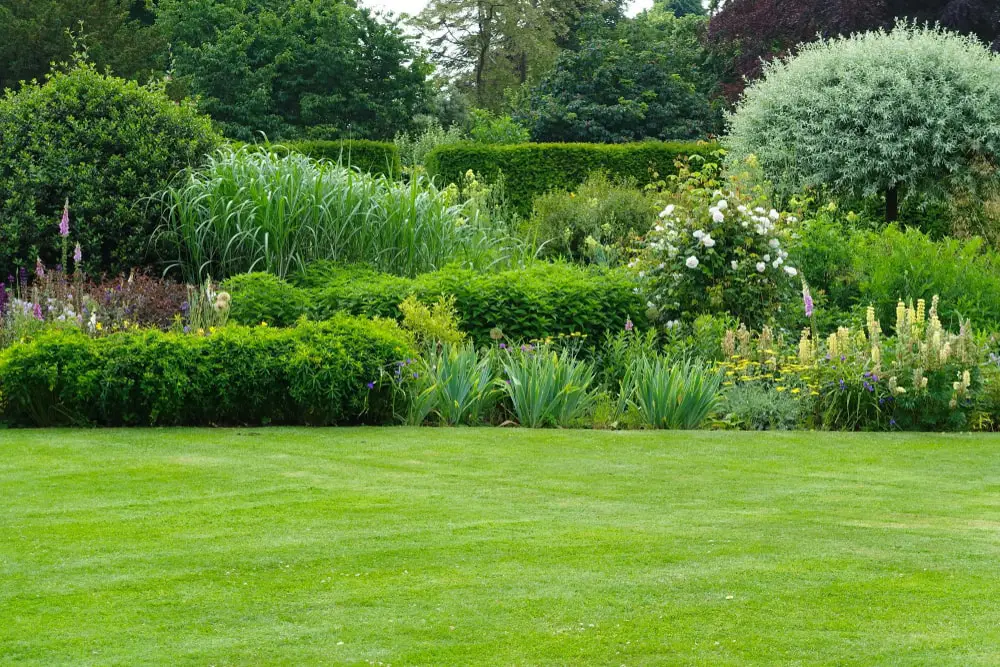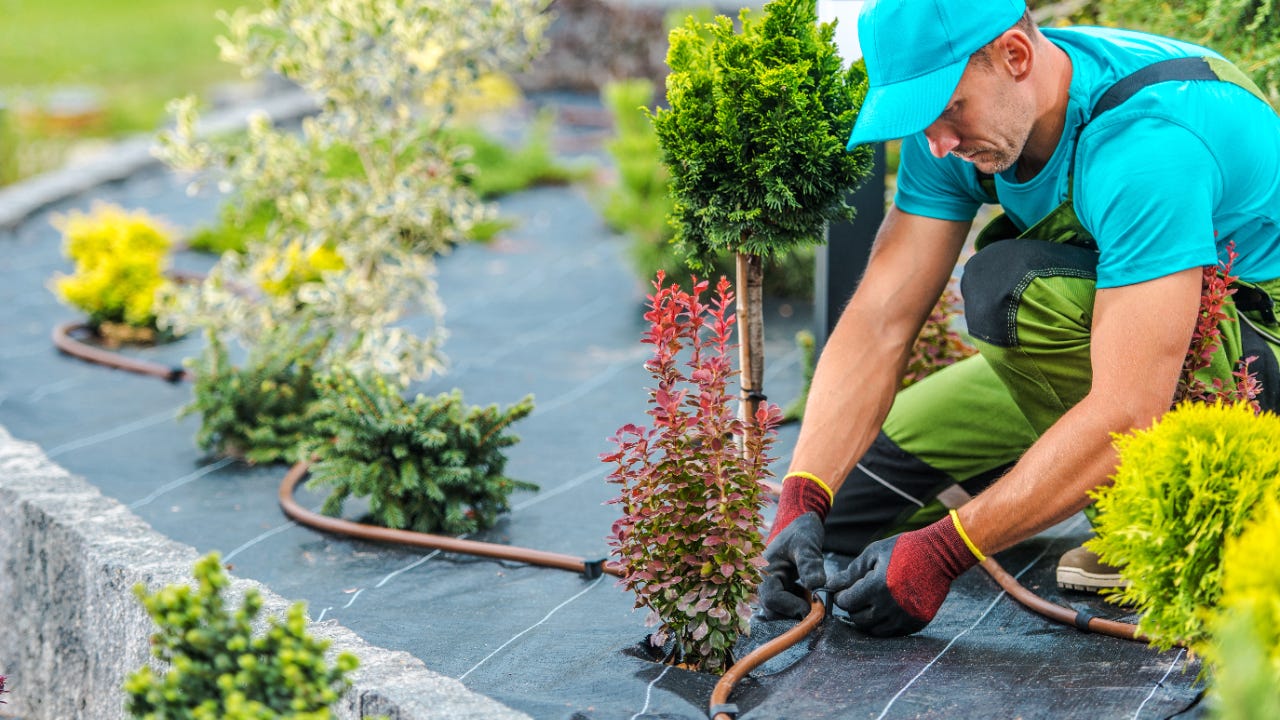A Comprehensive Guide to Designing and Implementing Effective Landscaping Solutions
The art and scientific research of landscaping prolong past plain appearances; they entail a thoughtful integration of style concepts, environmental stewardship, and sensible implementation. What methods can one employ to make sure these landscapes not only prosper however additionally thrive in harmony with their environments?

Understanding Landscape Layout Principles
One might question what foundational elements add to efficient landscape design. At its core, effective landscape design pivots on a number of key concepts that lead the setup and selection of components within an area. These concepts include unity, equilibrium, rhythm, and proportion, each offering to create an unified outdoor setting.
Unity refers to the cohesive partnership among various elements, ensuring that they interact visually and functionally. Equilibrium can be achieved via symmetrical or asymmetrical plans, permitting the landscape to feel steady and welcoming. Proportion includes recognizing the scale of aspects in regard to each other and the surrounding atmosphere, advertising visual harmony and convenience.

Assessing Your Outdoor Space
Prior to applying the principles of landscape style, a detailed assessment of your outside room is vital. This initial examination aids specify the scope of your landscaping job and makes sure that your layout aligns with the special features of your residential or commercial property. Begin by examining the measurements of your room, taking precise measurements to understand the available area for different components such as yards, paths, and outdoor patios.
Next, observe the existing functions of your landscape, consisting of topography, dirt quality, and drain patterns. These aspects dramatically affect plant option and positioning. In addition, assess the sunlight direct exposure throughout different areas throughout the day, as this will certainly impact the sorts of plants that prosper in your yard.
Take into consideration the microclimates developed by structures, trees, and other obstacles, as they can impact temperature and moisture levels. Finally, make note of any existing plants or hardscape components that you wish to preserve or remove. This extensive evaluation prepares for a educated and efficient landscaping remedy, making certain that your style is not just cosmetically pleasing however also practical and sustainable for many years ahead.
Sustainable Landscape Design Methods
These methods not just advertise ecological equilibrium yet also improve the functional and aesthetic value of a landscape. Carrying out reliable watering systems, such as drip irrigation, reduces water waste and makes sure that plants receive sufficient wetness (Palm Desert Landscaping).

Another efficient strategy is the strategic positioning of hedges and trees to offer natural windbreaks and color, thus decreasing power costs (Palm Desert Landscaping). Rain yards can be incorporated into the landscape style to handle stormwater drainage efficiently, filtering system toxins prior to they enter rivers
Choosing the Right Plants
Selecting the right plants for your landscape is critical to achieving both visual appeal and environmental consistency. The procedure starts with an understanding of your neighborhood environment, soil problems, and the certain microenvironments within your landscape. Assessing factors such as sunlight exposure, moisture levels, and existing flora will assist you select plants navigate here that prosper in your special setup.
Take into consideration incorporating native plants, as they are well-adapted to local conditions, require much less upkeep, and assistance neighborhood wild animals. In addition, picking a varied variety of varieties can boost biodiversity while reducing the risk of illness and insect outbreaks. It is vital to assess the growth habits, blooming durations, and seasonal shades of prospective plants to create a cohesive and vibrant landscape.
Furthermore, assume regarding the meant use of the room; as an example, if the location will experience high foot traffic, decide for resistant ground covers. By attentively choosing plants that line up with both your aesthetic objectives and ecological demands, you can create a lasting landscape hop over to these guys that not only enhances your home but additionally adds positively to the surrounding environment.

Execution and Maintenance Techniques
As soon as the right plants have been selected for your landscape, the emphasis changes to effective application and continuous maintenance techniques. Effective installation begins with proper site prep work, which consists of dirt testing to identify nutrient levels and pH, complied with by modifying the dirt as needed. Thoroughly set up plants according to their development behaviors and light requirements, ensuring sufficient spacing to promote healthy and balanced growth.
Irrigation is an essential element of implementation. Establish a watering schedule that considers the particular requirements of each plant types, changing for seasonal modifications. Using drip irrigation systems can enhance water efficiency and decrease runoff.
Maintenance strategies must be implemented to ensure the longevity and vigor of your landscape. Normal jobs consist of weeding, mulching, and trimming to manage growth and prevent disease. Fertilizing needs to be performed based upon dirt examinations, supplying the necessary nutrients without over-fertilizing.
Monitoring for parasites and diseases is necessary; early detection can avoid significant damages. Seasonal adjustments to maintenance routines, such as winterizing perennials and preparing for spring development, will ensure that your landscape continues to be visually enticing and healthy and balanced year-round.
Final Thought
Effective execution and ongoing maintenance even more make certain the longevity and vitality of landscapes. By incorporating these components, landscapes can be changed right into gorgeous, practical atmospheres that advertise biodiversity and add favorably to area health.
One could wonder what foundational aspects add to reliable landscape layout. At its core, effective landscape design hinges on several key principles that direct the plan and choice of aspects within an area.Selecting the right plants for your landscape is vital to attaining both aesthetic appeal and ecological harmony. It is important to assess the growth practices, blooming periods, and seasonal shades of possible plants to develop a natural and vibrant landscape.
As soon as the right plants have actually been selected for your landscape, the focus moves to efficient implementation and ongoing upkeep approaches.